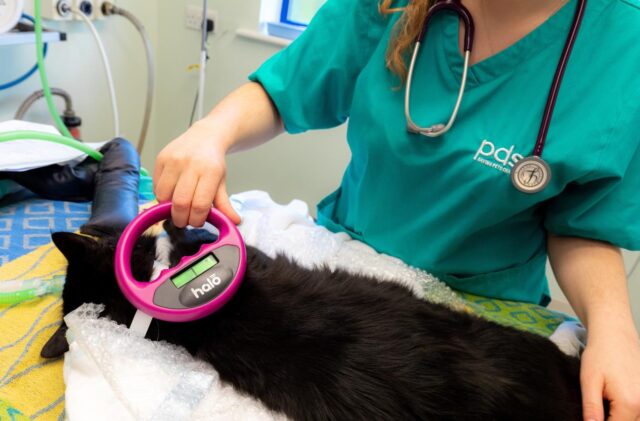As of 10 June 2024, it became law for all owners in England to have their cat microchipped. However, latest figures from PDSA revealed that 22% of UK cats are still not microchipped, despite the law being in place for one year.
The vet charity, which has 49 PDSA Pet Hospitals across the UK has carried out nearly 20,000 microchipping appointments in the past year* alone. Of which, over 12,600 were for cats.
PDSA Vet Nurse, Nina Downing said: “We’ve seen many cat owners get on board and get their cat chipped. Since 10 June 2024, when the cat microchipping law came into force in England, up to 30 May 2025, we microchipped almost 15,200 cats across our Pet Hospitals.
“This marks an increase of over 1.5 times compared to the same period the previous year, when we microchipped almost 9,400 cats.
“On average, we’ve seen more kitten and young cat owners come for microchipping appointments, which could mean those with older cats who have never been microchipped, have not yet complied with the new law. 63% of appointments were for cats aged 1 year old and under. Regardless of your cats age, we’d urge all cat owners to get their cat microchipped.
“If you have a cat who likes to explore the great outdoors, in situations where your cat may roam too far, or end up hurt or injured and unable to return home, a microchip may be the only way your cat can be easily reunited with you.
“Even if your cat prefers the indoor life, microchipping is just as important, and still legally required. You may not be too worried if you have an indoor cat, but there’s plenty of ways cats can sneak outside, or nip out through an open door or window.
“Our latest figures have found that 91% of pet owners say their contact details are up to date, but this leaves 9% with potentially incorrect and outdated information stored on their pet’s microchip, which would be a real issue if their pet was lost or stolen.
“It is really important that owners are aware of which database their pet’s microchip is registered, so they are able to keep their details up to date. Moving address or getting a new phone number are simple, but vital changes for the microchip database.
“We’ve carried out many cat microchipping appointments across the UK, with our Bow PDSA Pet Hospital seeing the most, with over 800 appointments, since 10 June 2024, up to 30 May 2025.”
Concerned about microchipping?
Nina adds: “A microchip is a tiny identification device that contains a unique number, usually 15 digits, linking a pet to their owner. In cats, microchips are implanted under the skin between the shoulder blades. It’s a very quick procedure, similar to a routine injection, that takes just a few seconds and doesn’t require sedation or anaesthetic, so shouldn’t cause concern for owners.
“Microchip numbers are then registered to a database, the database stores various amounts of vital information, and the more up-to-date information stored on your pet’s microchip registered record, the better! Some of the key information that can be stored includes an owner’s full name, address, and contact details, as well as the pet’s name, gender, breed, date of birth and even their colour. Breeder information can be stored as well.”
“Microchipping ensures any lost or stolen cats have the best chance of being reunited with their owners as quickly as possible. They are also useful to keep other cats out of your home with a microchip-activated cat flap and restrict food access if you have a microchip food bowl.
“If you have either of these gadgets, you can also easily monitor your cat’s comings and goings and how often they eat. This can come in handy if your cat needs to lose weight or needs more careful monitoring due to another health concern.”
If you haven’t got your cat microchipped, and you want to find out more, visit: www.pdsa.org.uk/microchipping-cats




